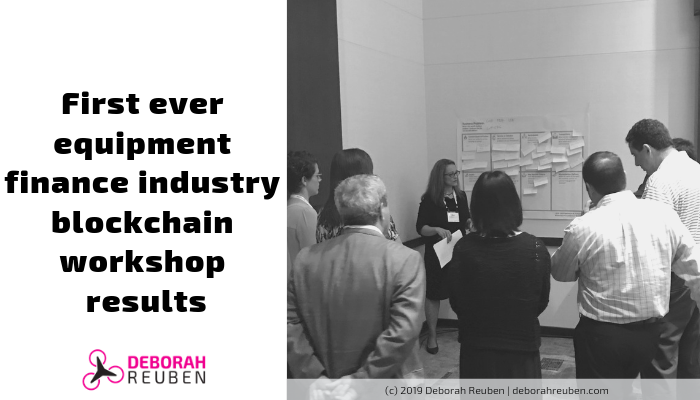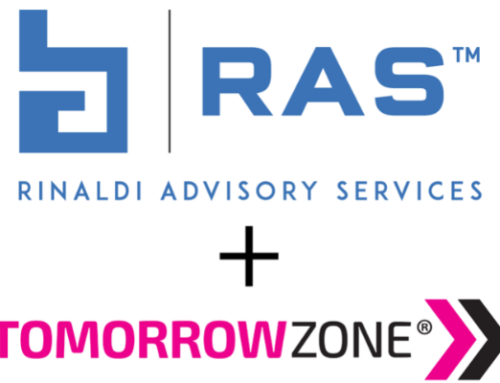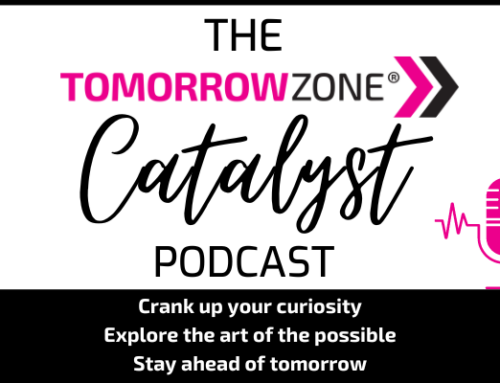
Of the various technologies currently on-the-rise, none hold the power to fascinate quite like the seemingly endless possibilities of Blockchain.
Although blockchain is frequently discussed (and often over-hyped), one can’t overlook the undeniably exciting possibilities for the technology… especially in its relation to the equipment finance industry.
At a recent workshop I hosted, we explored many of these possibilities for blockchain, and in particular, its immersion into equipment finance. Over the past several years, I’ve developed a passion for designing and facilitating immersive experiences to help people understand the possibilities of advancing technology. This particular workshop, leading up to the 2018 ELFA Operations & Technology Conference in Philadelphia, PA., was notably enlightening.
After welcoming the participants to the three-hour workshop, I shared preliminary results from the 2018 Equipment Finance Industry Blockchain Survey, conducted in collaboration with ELFA and The Alta Group. Afterward, my workshop co-designer, Bart Cant, IBM Blockchain Practice, served as our guest speaker and blockchain expert: taking us through a primer on blockchain for business and helping us to understand how to identify good blockchain use cases. Later, our co-facilitators Drew Martin, CTO of Channel Partners, Andrew Cotter, CIO of Somerset Capital, John Rizzi and John Hurt, both of The Alta Group, led our breakout teams.
This post is a summary of the key takeaways from this experience.
- Blockchain for business is different from public blockchain, such as bitcoin.
- Key attributes of a quality use case for blockchain for business.
- Questions to ask about a candidate blockchain use case.
- Five viable use cases for blockchain in equipment finance.
- Workshops like this can accelerate your understanding of a complex technology topic, like blockchain.
Blockchain for Business
As a foundation for our study of blockchain use cases, we began the workshop by providing a base understanding of blockchain for business. A shared distributed ledger, blockchain is a linked list of encrypted transactions, stored across a network of computers. This network actively participates in the validation, upkeep, and accuracy of the database, and is rewarded for doing so in cryptocurrency, Bitcoin (a cryptocurrency).
Further, we analyzed the differences between blockchain for business vs. public blockchains, such as with bitcoin. In regard to business-to-business transactions, such as commercial equipment financing and leasing, it’s important to understand the nature of business blockchains.
A business blockchain is purpose-driven to meet important requirements of a business network. Participants choose which assets will be tracked and shared in the ledger, agreeing on what constitutes a provable endorsement of the transactions recorded. Unlike a public blockchain, the identity of participants is known. Privacy and confidentiality are key, and information is shared on a need-to-know basis.
Key attributes of a quality use case for blockchain for business
Blockchain for business use case candidates will include attributes such as the following:
- A network of business participants generating transactions which impact data maintained by multiple members.
- Stakeholders that independently maintain similar data sets and document their own version of transactional events.
- Participants interacting independently due to a lack of trust; imposing new layers of verification requirements.
- Dependency on intermediaries to complete transactions.
Identifying a good blockchain use case is not always easy. However, there should always be:
- A business problem that cannot be solved more efficiently with other technologies.
- An identifiable business network with participants, assets, and transactions.
- A need for trust, consensus, immutability, finality and provenance.
Questions to ask about blockchain use cases
Beginning with a proper framework is critical when examining use cases on multiple dimensions.
To help our teams identify potential blockchain use cases, we used a tool called the “Blockchain Value Canvas”, which we’d adapted for exploring equipment finance cases. This framework identifies the business problem before focusing on technology solutions. First, we analyzed the customer experience: beginning with the questions “Where is the friction in this process?” and “Where could we improve customer experience?”
While evaluating blockchain use cases, our group identified business networks experiencing challenges in their processes, such as: missing information, lack of visibility, inefficiencies in verification, or latency. Further, we looked for some type of asset of value (virtual, physical, financial, or legal) that changes hands within the network and numerous trusted third parties, guaranteeing transactions.
Drawing from questions in the Blockchain Value Canvas, each group explored a possible blockchain use case for equipment finance. Due to the fact that our groups were comprised of representation from a variety of companies, the diversity in perspectives enabled rapid expansion of our thinking and ideas.
- Issues and Friction: What user problems are you focusing on solving?
- Service or Solution: What solutions to those problems are you focusing on?
- Participants: Who are the minimum entities needed to recognize value in the network?
- Transactions: What are the transactions involved, between whom, and what assets are associated with these transactions?
- Assets: What assets are involved and what is the key information associated with the assets?
- Value Propositions: What value will the participants get from the network? What advantage do you have that competitors would have difficulty matching?
- Key Success Criteria: How will we know that this network is successful? What business metrics will be impacted?
- Monetization Options: What are some of the ways this network, service, or solution may generate revenue?
Five viable use cases for blockchain in equipment finance
“What is possible for the equipment finance industry?”
This is a question we examined during the design-thinking workshop, as we gathered to explore the possibilities of blockchain for five different equipment financing use cases:
Cost Per Use: In this scenario, difficulties arise when there is a lack of trust in the data uploaded by companies using equipment on a pay-per-use basis. Real-time data capture leveraging blockchain could ensure accurate billing and cost reduction, while increasing trust and transparency for transactions among a variety of participants.
UCC Filing: In the equipment finance ecosystem, many participants are affected by inefficiencies and inconsistencies in filing UCC documents. The current process for searches and validations can be cumbersome and costly. A blockchain-based solution could increase speed, accuracy, consistency, and transparency in obtaining and releasing security interests while driving down costs for participants in the blockchain network. Today, UCC service providers act as an intermediary: providing both data and services that everyone in our industry needs, in a centralized manner.
What is the role of UCC service providers for the future?
Should they be looking at blockchain technology?
An interesting example of reinvention is the post-trade processing the Depository Trust & Clearing Corporation (DTCC) provides for the capital markets industry. As an intermediary under threat of disintermediation from blockchain’s possibilities, DTTC is taking a leading role in driving the use of distributed ledgers for post-trade processing; leveraging blockchain to redefine their role for the future.
Know Your Vehicle: In vehicle leasing, when we don’t get accurate vehicle information upfront, it can lead to re-documentation of the transaction, issues in ownership perfection, lags in titling work, and increased processing cost, due to inaccuracies. We envisioned blockchain providing the single source of truth for vehicle information, among a variety of participants, while providing transparency, speed and efficiency in processing. In deeper thought, this concept provides further capabilities with the intersection of blockchain and the Internet of Things (IoT).
What new leasing models are possible with real-time data collection from assets?
For example, mileage data is often the measure used to price leases; however, as the data collection capability improves, additional data points could be captured to influence pricing. The concept could go beyond vehicles, to any type of equipment. Contemplate the potential leasing models and available options with the convergence of IoT and blockchain, as well as the potential benefits of leveraging real-time condition and utilization data.
Syndication: Today, there are numerous sources of data in the syndication process, with each participant having their own system, process and format. While some participants are regulated, others are not.
These issues create complexity and inefficiency in processing. With so many touches across multiple participants, this use case is gaining attention in multiple industries. Blockchain could play an important role in gaining trust and transparency of data, reducing the rework and redocumentation, and acting as a catalyst for driving standards to increase efficiency across the ecosystem. Trusted data in a shared ledger could remove the redundant data validation processes. Smart contracts could be leveraged to automate various aspects of legal contracts: driving greater efficiency at reduced costs. In the insurance industry, blockchain is being considered to track underlying assets for insurance contracts and tracking nationwide participants. Many forward-thinking law firms are investigating blockchain technology’s long-term impacts to the legal profession.
In November 2018, BBVA announced the first syndicated loan recorded on blockchain.
“BBVA and Red Electrica Corporation have become the first businesses in the world to deliver a syndicated loan using blockchain. The €150m deal, granted by BBVA, BNP Paribas and MUFG, was reached in record speed using BBVA’s proprietary platform- which is powered by distributed ledger technology.”
Asset Management: Lack of transparency in the usage of equipment makes determining the history of an asset difficult. Data captured from the use of IOT sensors and stored on a blockchain in real-time could streamline asset monitoring with accurate information and reliable history. This would create a similar effect of “Carfax® for equipment”: reducing the risk of fraud, while improving data accuracy and process efficiency, for monitoring and managing assets across the entire equipment lifecycle.
In an “outside the box” approach to solving a common problem, the workshop team imagined involving multiple participants in the blockchain (such as insurance providers, dealers, and certified servicing centers) to raise the topic of interoperability between the blockchains. This is a topic that is already being studied and a variety of blockchain interoperability projects are underway. It’s expected that in a couple years, we’ll begin seeing solutions for interoperability between the different types of blockchains.
Workshops can accelerate your understanding of technology possibilities
Blockchain is a complex technology topic. Although it can take time to understand it, workshops like this can accelerate your understanding of the business possibilities it offers much faster than reading about it or watching presentations. Facilitated, guided exercises, like the value canvas framework, assist in rapidly thinking about a use case on multiple dimensions, Due to the canvas’s fast pace, you don’t have time to overthink any one element. The collaborative framework brings structure to the process: allowing you to explore creative possibilities. Small groups like the teams in our workshop offer a safe environment for asking new, creative and out-of-the-box questions. Finally, bringing a variety of perspectives together in groups like this adds the value of diversity-of-thought, allowing you to expand your thinking on the topic (thus avoiding getting stuck in traditional thought patterns).
One of the workshop attendees, who struggled with understanding blockchain prior to this workshop, enthusiastically shared with me afterward: “Through this workshop, my understanding of blockchain increased exponentially. Going through the exercise really solidified it for me.”
Conclusion: Yes, blockchain is applicable to the equipment finance industry
While I anticipated that our workshop would identify one or two viable use cases, I was prepared to find that some were not viable blockchain project candidates. Instead, I was surprised that our team found all five use cases to have some elements of a viable blockchain project candidate.
Is blockchain applicable for the equipment finance industry? If so, how?
The conclusion from the workshop is that, yes, there is applicability for our industry, but there remains a lot to learn in the industry.
Blockchain is applicable for the equipment finance industry, but understanding it is the first step to its adoption. While it’s not always easy to identify blockchain use cases, there are tools and frameworks that you can employ to help you understand where blockchain could play a role in the future.
This was the first industry-level workshop to explore applicability of blockchain for equipment finance. Events like this will help drive clarity to the role blockchain may play in the future of the industry; studying use cases in activities such as this can accelerate understanding of this complex topic beyond reading or attending lectures about the technical aspects of blockchain.
If you are interested in custom workshops for your company or as an enhancement to your event, click here to learn more.
To learn more about the industry survey see the report that I co-authored with The Alta Group, Blockchain Beyond the Hype: Perspective for the Equipment Finance Industry.





